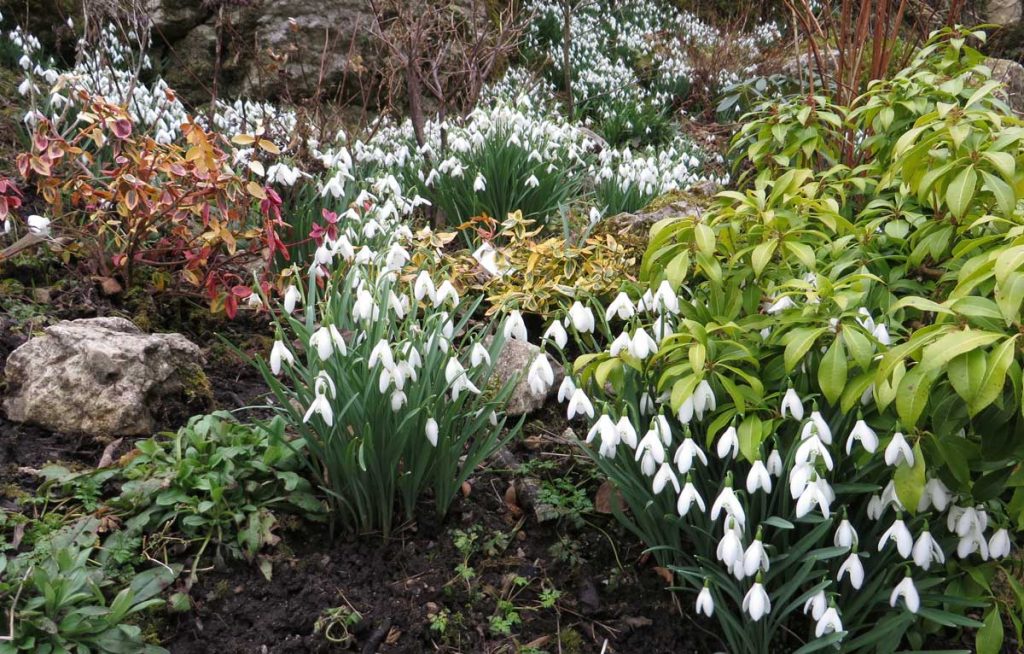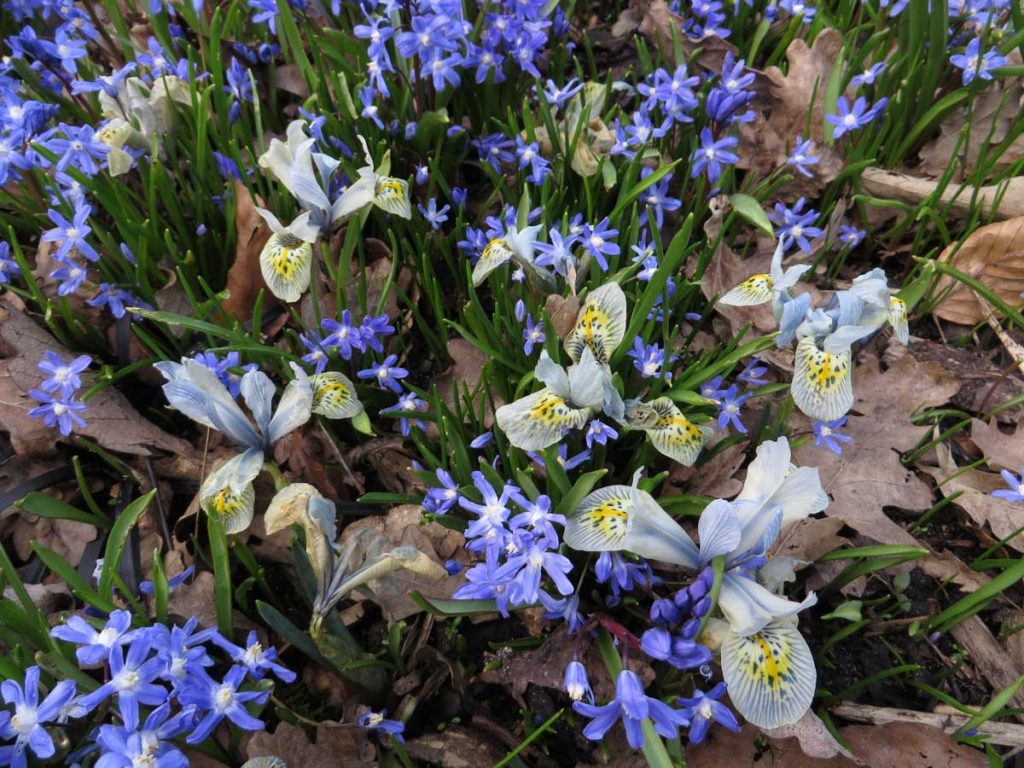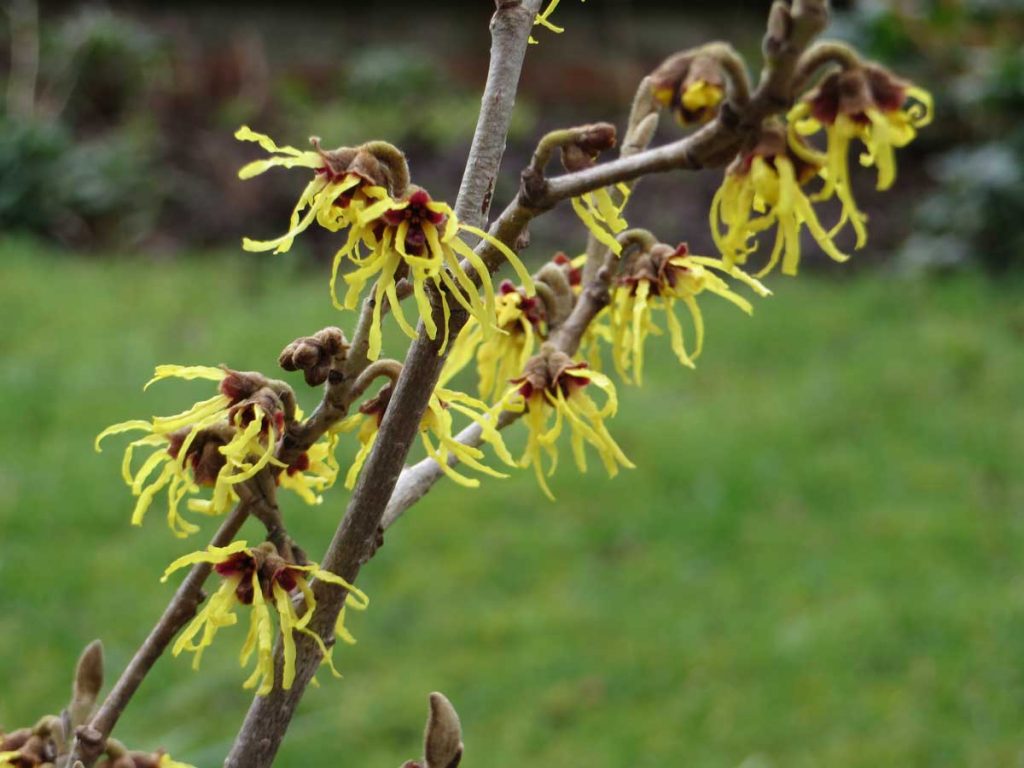February holds the promise of spring in often in cold and frozen conditions so plants have to be tough to flower. There are a few brave plants that will give winter interest but much of the colour comes from evergreens and the stems of trees and shrubs.
February is known as the snowdrop season so try and take time out to visit local woodland or some of the gardens with drifts of snowdrops and other early flowering bulbs. Rode Hall in Cheshire has snowdrop walks from 4th February to 5th March, Dunham Massey has a large winter garden with snowdrops and is open daily then there is Chirk Castle with the display of drifts of snowdrops in the woodland.

Other bulbs to look out for are the tiny Scilla or Chionodoxa with their dark to light blue star shaped flowers. They would do well planted with snowdrops and the winter aconite Eranthis hyemalis with their rich buttercup yellow flowers. Dunham Massey gardens plant drifts of the bulbs mentioned above and add the short Iris reticulata varieties. The blue Chionodoxa with the Iris Katharine Hodgkin peeping over the dead leaves makes a lovely show for early spring.

In addition there are some shrubs that have scented flowers. The small spidery flowers of Witch hazel or Hamamelis come in a number of different varieties. Some are scented and I would recommend Hamamelis x intermedia Vesna with pale orange flowers. Another classic scented shrub is Daphne mezereum which needs some shelter and does well on any soil but heavy clay soil. The shrub will grow to 1.5 m tall, is evergreen and has heavily scented pink flowers from February onwards. Lastly the winter honeysuckle, Lonicera fragrantissima smells like summer honeysuckle but the flowers are small. If you cut stems and bring them indoors you will have scent drifting around a warm room. This shrub also likes a bit of shelter and also dislikes heavy clay soil. The shrub doesn’t look much in summer with its twiggy stems but earns a place in any garden with winter scent. Run a summer flowering clematis through it in summer to add colour.

Late February into March is the time to prune dogwood grown for their stems. If your soil is rich and the plants are growing well, you can cut the stems down to a stump about 30 cms tall and new shoots should be produced. If the plants are spindly, then give them a good feed in March and cut back stems every couple of years. Or cut out half of the stems every year.
